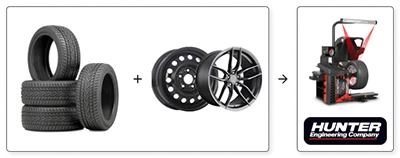Finding the Right Tire Pressure: Tips and Advice

Maintaining the correct tire pressure is essential for your vehicle's safety, economy, and performance. In this article, we will explore in depth how to find and maintain the right tire pressure, the risks associated with incorrect pressure, and practical tips for checking and adjusting it.
Why is Tire Pressure Important?
Tire pressure directly influences several aspects of driving and vehicle performance. Incorrect pressure can lead to premature tire wear, reduced grip, increased fuel consumption, and a higher risk of accidents.
Effects of Over-Inflation and Under-Inflation
- Over-Inflation: Too high pressure can cause premature wear at the center of the tread. This reduces the contact area with the road, decreasing grip and handling.
- Under-Inflation: Too low pressure causes premature wear on the tire shoulders. Under-inflated tires can overheat, risking blowouts and increasing braking distances, especially on wet roads.
How to Find the Recommended Tire Pressure?
The recommended tire pressure is determined by your vehicle's manufacturer and can be found in several locations:
- On a sticker in the driver's side door
- In the fuel flap
- In the vehicle's maintenance manual
Standard Pressure vs. Load Pressure
Manufacturers typically provide two types of pressure:
- Standard Pressure: For everyday use.
- Load Pressure: To be used when the vehicle is heavily loaded, such as during a vacation trip.
Units of Measurement
Pressure is indicated in bars or psi, depending on the country. To convert:
- 1 bar = 14.50 psi
Risks of Incorrect Tire Pressure
- Endurance: Driving with under-inflated tires deteriorates their structure, risking blowouts.
- Aquaplaning: The risk is increased if the pressure is lower than recommended.
- Braking: Incorrect pressure can increase braking distance.
- Fuel Consumption: Under-inflated tires increase rolling resistance, leading to higher fuel consumption.
Checking and Adjusting Tire Pressure
When to Check?
Ideally, check your tire pressure at least once a month and before any long trip. In winter, add 0.25 bar to compensate for the temperature drop.
How to Check?
- When Cold: Measure the pressure when the tires are cold or after driving a maximum of 4 km at low speed.
- Use a Reliable Gauge: Gauges at service stations may lack calibration. A personal gauge is recommended.
- Equalize the Pressure: Ensure that the pressure is equal on all four tires to avoid abnormal wear and misalignment.
TPMS (Tyre Pressure Monitoring System)
If your vehicle is equipped with a TPMS, it will alert you in case of under-inflation. However, it is recommended to regularly check the pressure and not wait for the TPMS alert.
How to Measure Pressure Correctly?
Necessary Tools
- Gauge: Digital or analog, for accurate measurement.
- Compressor: To adjust the pressure if necessary.
Measurement Steps
- Remove the valve cap.
- Place the gauge on the valve and press firmly.
- Read the displayed pressure and compare it to the recommended pressure.
- Adjust if necessary: add air with a compressor or release air if over-inflated.
- Re-check the pressure after adjustment to ensure it is correct.
Practical Tips
Winter Inflation
In winter, tire pressure decreases with temperature. Add 0.25 bar to compensate for this drop and maintain good grip on cold roads.
Before a Long Trip
Before going on vacation or a long trip with a loaded vehicle, adjust the tire pressure to the load pressure recommended by the manufacturer.
Personal Equipment
A portable tire pressure gauge, like a keychain gauge, can be very useful for quick and regular checks.
Conclusion
Maintaining the right tire pressure is a safe, economical, and responsible practice. By following these tips and regularly checking your tire pressure, you extend their lifespan, improve your safety, and reduce fuel consumption. For more information on tire maintenance and the best products for your vehicle, visit PMCtire.com.
Dominic Vaillancourt
Expert automobile & Porte-parole


